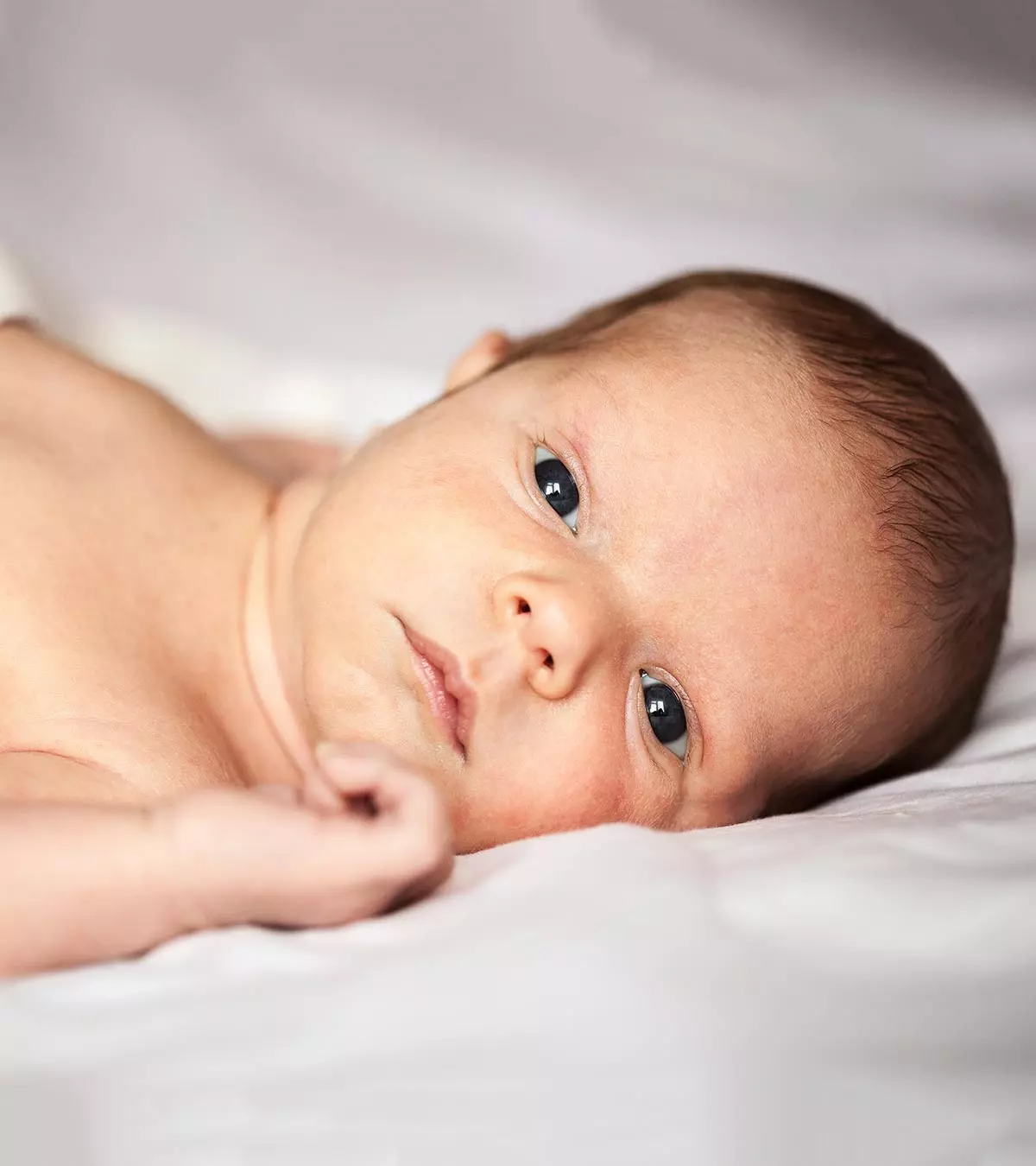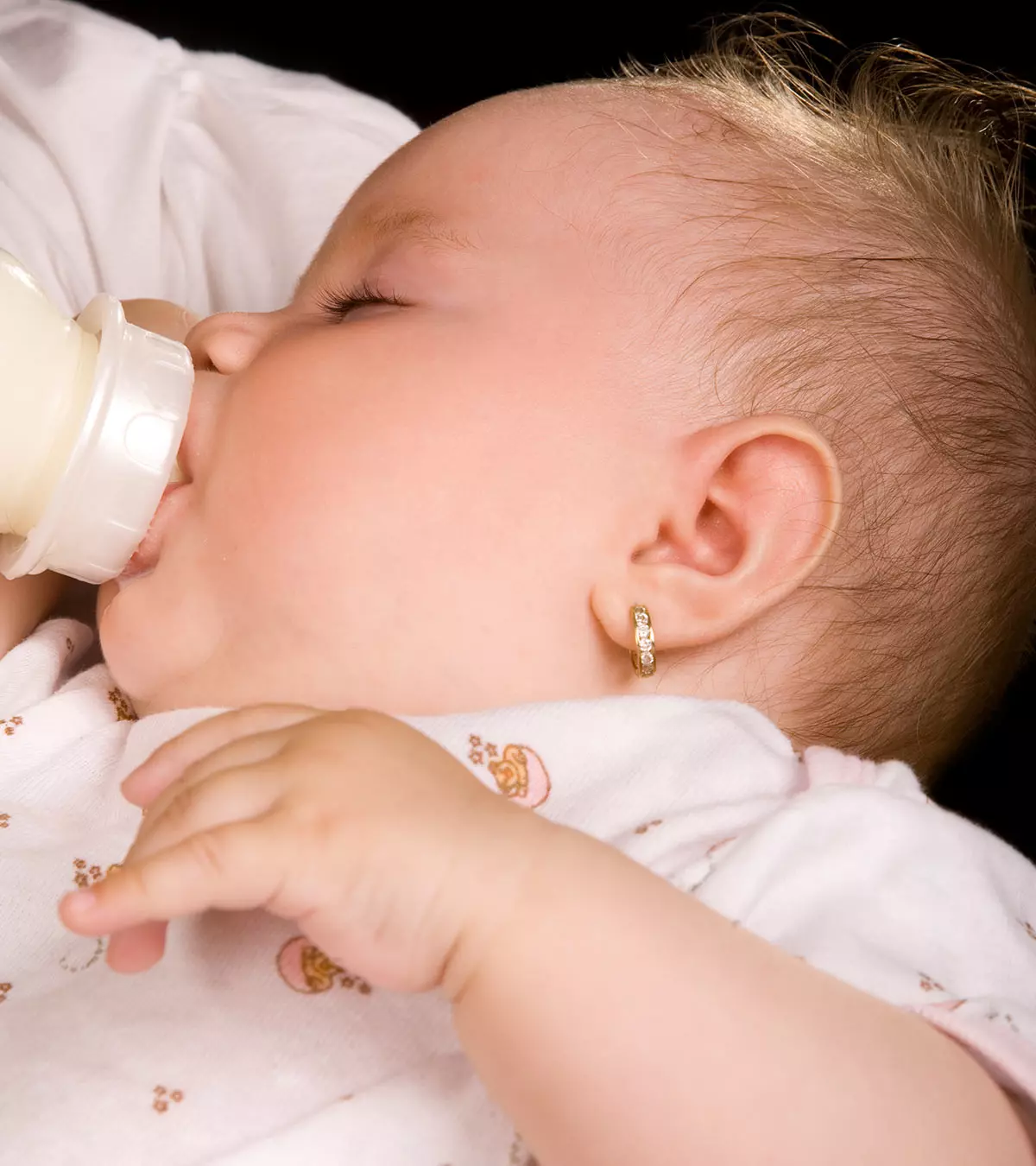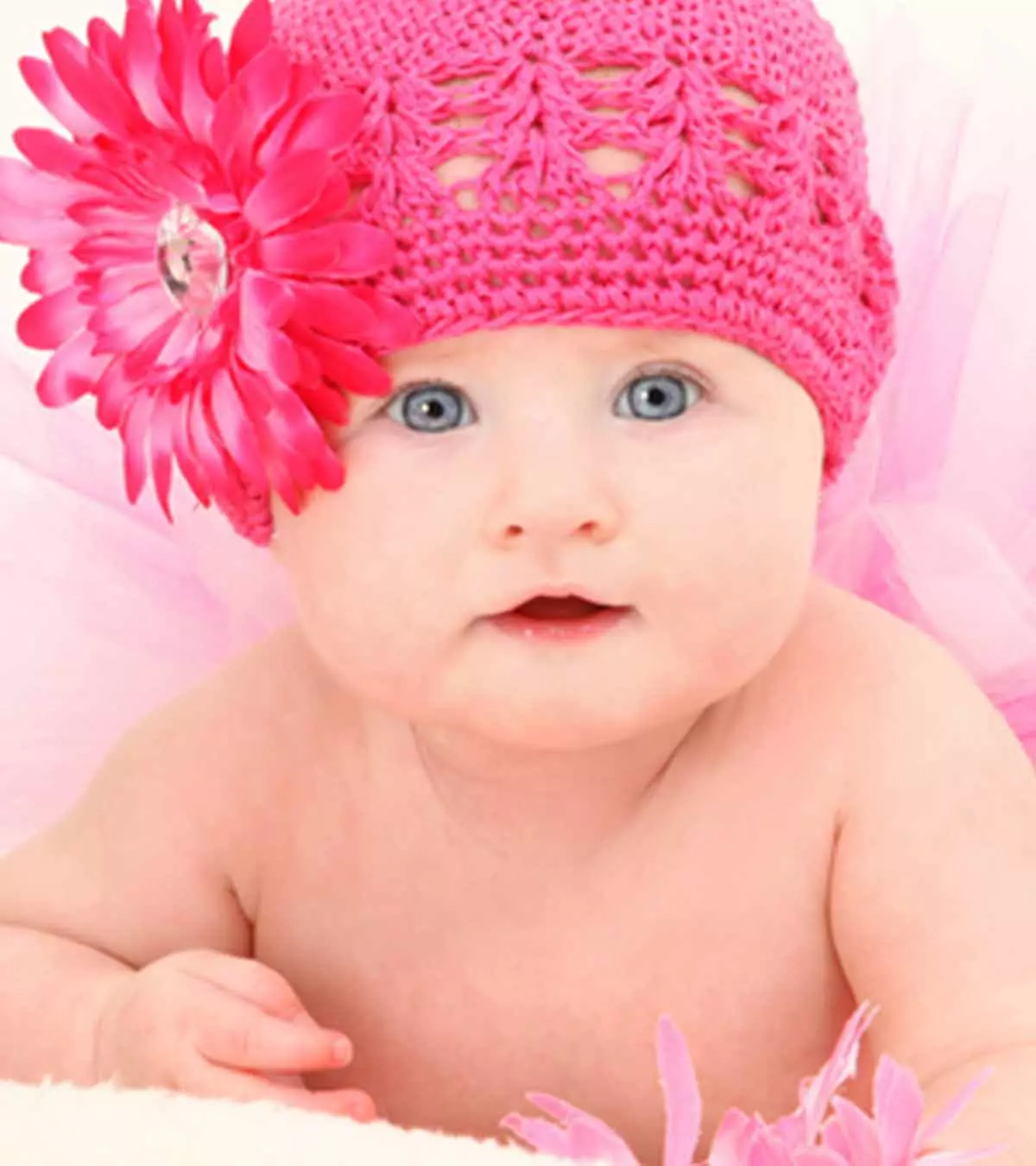
Image: ShutterStock

You may be surprised to see your newborn’s body hair if you are a first-time mom. A newborn’s skin is usually dry and flaky and not as plump and smooth as commercials portray. However, it does not remain like that for long. Your baby’s body hair may be a cause of concern only in a few exceptional cases. Otherwise, they are naturally shed in a few months. Read on if you wish to know more about the fine hair on your infant’s body. We also provide some tips to make the shedding process faster.
Key Pointers
- The hair on a newborn baby is called lanugo, which is derived from the Latin word “wool”.
- Premature babies are more likely to have body hair.
- Lanugo hair protects the fetus and regulates body temperature in the womb.
- If lanugo hair does not shed properly, it can cause excessive hair growth due to congenital adrenal hyperplasia (CAH).
- If lanugo hair is still present after six months, it is advisable to consult a doctor.
About Newborn Body Hair
The hair that you see on your newborn baby’s skin is called lanugo, a word derived from the Latin word lana, meaning wool(1). According to the National Institute of Health (NIH), lanugo is present in 30% of newborns, which is normal.
- The infant hair is fine, but clearly visible.
- It mostly grows on the back, shoulders, forehead, ears and face of the child.
- Fetal hair development starts at 18 to 20 weeks of gestation ( 2).
- Premature babies are more likely to have such body hair.
- The hair is shed naturally and it may take from between a few weeks to a few months to disappear.
- In some cases, babies may begin shedding their fetal hair while still in the womb, while others may be born with lanugo still covering their body.
, a hair loss specialist from New York, says, “The presence or absence of hair on a newborn can vary due to genetic factors, gestational age, and individual development. Some babies may have more lanugo that persists until or shortly after birth, while others may shed most of it before birth. Additionally, babies born prematurely may have more lanugo, as it typically sheds closer to full-term gestation.”
 Quick fact
Quick factRole Of Hair On Newborn Baby Body
There is a definite reason for the existence of body hair in newborn babies (2) (3).
- Lanugo acts as a protection on the tender skin of your baby while she is in your womb.
- It prevents any damage that can be caused by the amniotic fluid.
- It also holds together the vernix caseosa, a greasy wax-like layer that covers your child’s skin in the womb to keep it warm and moisturized. It also helps facilitate easy passage through the bony cervix at the time of birth.
 Quick fact
Quick factSo, even if it does not look so nice, this initial body hair is advantageous to your little one.
In some cases, these delicate hair on the baby’s body can be a cause for worry. This happens when the lanugo does not shed properly and develops into more prominent hair (4).
- Such a condition happens when a child has congenital adrenal hyperplasia (CAH), signifying that they lack a certain enzyme.
- CAH causes reduction or lack of production of a hormone called cortisol or aldosterone.
- This further leads to higher secretion of the male hormone androgen, which causes excessive baby hair growth.
- This problem can occur in male and female babies.
- CAH also causes low sodium in the blood, which can lead to improper functioning of the heart.
What If Body Hair Does Not Disappear?
If your baby has not shed the initial hair within a maximum period of six months, or is developing darker hair, then you must consult a doctor.
- Because of the problems related to CAH, its timely treatment is necessary.
- Children with CAH are generally administered the required hormones externally to maintain a balance and prevent any serious condition (4).
Frequently Asked Questions
1. Why do some babies come out hairy?
The exact reason why some babies are hairy is unknown. However, genes or DNA might be responsible for the hair growth on a baby’s body.
2. How long does it take for lanugo to fall off?
Hair shedding begins and the lanugo disappears within the first two months of life for most babies. However, even after two months, some fine or soft hair may be retained on their ears, neck, or tailbone. It is not a cause for concern in most cases (5).
3. Does lanugo regrow later in life?
In most cases, once the baby sheds the lanugo (sometimes referred to as baby fuzz in modern terms), it does not grow back. In rare cases, however, lanugo can continue to grow even when you are an adult (5) if you have a severe underlying disease such as hypertrichosis, anorexia nervosa, bulimia nervosa, malnutrition, or cancer (2) (7).
4. What are the remedies to remove lanugo?
Many parents believe that massaging the baby with olive oil or baby oil can facilitate the quick removal of lanugo. However, these are anecdotal beliefs and have no scientific basis. In most cases, lanugo disappears on its own. However, if lanugo persists even after six months, you can ask your pediatrician for their opinion.
For most new parents, it could be surprising to witness their newborn baby’s body hair. However, while it is not a common phenomenon, sometimes babies have considerable body hair after birth. You may have to wait for a few weeks for the hair to shed off. Also, it could be replaced by fine hair. Though your baby’s body hair is seldom a cause of concern, in some cases, the hair could develop prominently and may not shed with time. If you encounter such a situation, you may contact your baby’s pediatrician, who could comprehend its reason and suggest an appropriate remedy.
Infographic: Benefits And Drawbacks Of Newborn Baby’s Body Hair
Newborn baby body hair, also known as lanugo, is a fine, downy hair covering the fetus’ skin during the later stages of gestation and after birth. While there are several benefits of newborn body hair, if it does not shed for too long after birth, it can also lead to some complications. So, scroll through the infographic below to learn the advantages and disadvantages of newborn body hair.
Some thing wrong with infographic shortcode. please verify shortcode syntax
Illustration: Effective Tips To Treat New Born Baby&039s Body Hair

Image: Dall·E/MomJunction Design Team
In this video, the doctor explains about body hair in newborns and helping parents embrace the beauty of their little ones’ natural development.
References
- Newborn Appearance.
https://www.stanfordchildrens.org/en/topic/default?id=newborn-appearance-90-P02691 - Embryology, Lanugo.
https://www.ncbi.nlm.nih.gov/books/NBK526092/ - The many benefits of infant massage.
https://www.chrichmond.org/blog/the-many-benefits-of-infant-massage - Congenital Adrenal Hyperplasia in the Newborn.
https://www.health.state.mn.us/docs/diseases/cy/cahguidenb.pdf - Lanugo
https://my.clevelandclinic.org/health/body/22487-lanugo - How Your Newborn Looks.
https://www.healthychildren.org/English/ages-stages/baby/Pages/How-Your-Newborn-Looks.aspx - Hypertrichosis;
https://journals.lww.com/ijd/pages/default.aspx
Community Experiences
Join the conversation and become a part of our nurturing community! Share your stories, experiences, and insights to connect with fellow parents.
Read full bio of Pranjul Tandon
- Dr. Hannah Kopelman is a hair and skin care specialist and podcast host at Derm Club. She has completed two clinical fellowships in dermatology – hair loss from Columbia University and cutaneous oncology from Boston University.
 Dr. Hannah Kopelman is a hair and skin care specialist and podcast host at Derm Club. She has completed two clinical fellowships in dermatology – hair loss from Columbia University and cutaneous oncology from Boston University.
Dr. Hannah Kopelman is a hair and skin care specialist and podcast host at Derm Club. She has completed two clinical fellowships in dermatology – hair loss from Columbia University and cutaneous oncology from Boston University.
Read full bio of Kalpana M
Read full bio of Rebecca Malachi
Read full bio of Ghazia Shah

















